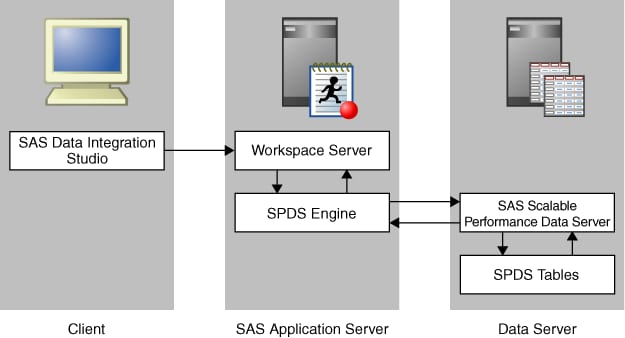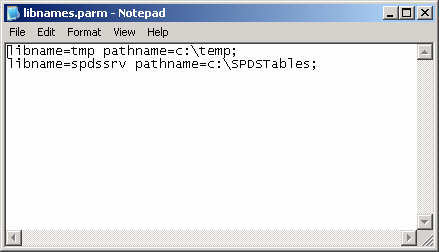Establishing Connectivity to a Scalable Performance Data Server
Overview of Establishing Connectivity to a Scalable Performance Data Server
Configuring a connection
from SAS to a Scalable Performance Data Server (SPD Server) is a three-stage
process:
This example shows the
process for establishing a SAS connection to SPD Server. It assumes
that the software for the database has already been loaded by using
the standard installation wizard for the database client. The SPD
Server client and server software must be installed before the connection
can be established.
Stage 1: Configure the libnames.parm File
When you install the SPD Server software on Windows, a
libnames.parm file
is created in the C:\Program Files\SAS Institute Inc\SPDS-version\Site directory.
You must specify at least a LIBNAME and a pathname for the directory
to use for the SPD Server tables (for example, C:\SPDSTables).
For the LIBNAME, use the LIBNAME domain that you created earlier for
the library (in this case, spdsrv).
Stage 2: Register the Server
-
Connection Properties
SPDSAuth(You might need to create a new authentication domain. For more information, see How to Store Passwords for a Third-Party Server in SAS Intelligence Platform: Security Administration Guide.) Click New to access the New Authentication Domain dialog box. Then enter the appropriate value in the Name field and click OK to save the setting.
Stage 3: Register the Library
After you have registered the
server, you can register the library. To register the library, perform
the following steps:
At this point, register
tables as explained in Registering and Verifying Tables.

